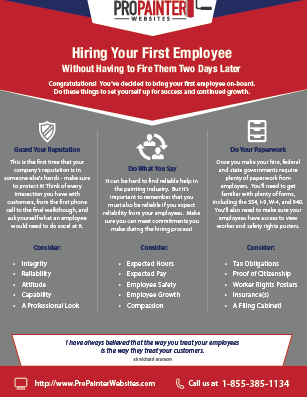Examine The Duty Of Seasonal Consider The Success Of Commercial Exterior Paint And Reveal The Best Times To Safeguard Long-Term Outcomes For Your Project
Examine The Duty Of Seasonal Consider The Success Of Commercial Exterior Paint And Reveal The Best Times To Safeguard Long-Term Outcomes For Your Project
Blog Article
Content Created By-Doherty Rodriquez
When you're planning an industrial external painting project, seasonal elements can make or break your outcomes. You'll wish to consider exactly how temperature level and moisture impact paint application and drying out times. Picking the appropriate season can guarantee your paint sticks effectively and lasts much longer. Yet which seasons are truly the most effective for this type of work? Allow's check out the crucial elements that can influence your project's success.
The Impact of Temperature Level on Paint Application
When you're preparing an industrial external paint task, the temperature level can dramatically affect how well the paint sticks and dries.
Preferably, you want to repaint when temperature levels vary between 50 ° F and 85 ° F. If it's too chilly, the paint may not cure properly, bring about issues like peeling off or breaking.
On the flip side, if it's also hot, the paint can dry out also promptly, avoiding proper adhesion and resulting in an irregular finish.
You ought to likewise think about the moment of day; morning or late afternoon provides cooler temperature levels, which can be much more desirable.
Always check the maker's referrals for the specific paint you're using, as they usually provide support on the suitable temperature level variety for optimum outcomes.
Moisture and Its Result on Drying Times
Temperature level isn't the only ecological variable that affects your business external paint job; moisture plays a considerable function also. High moisture levels can decrease drying times significantly, impacting the overall top quality of your paint work.
When the air is saturated with moisture, the paint takes longer to heal, which can bring about problems like poor adhesion and a higher danger of mold growth. If you're painting on a specifically damp day, be planned for prolonged wait times in between coats.
It's essential to check neighborhood weather conditions and plan as necessary. Ideally, go for humidity levels between 40% and 70% for optimum drying.
Keeping https://exteriorpaintersnearme66543.mdkblog.com/41158607/protect-the-best-painting-specialist-for-your-project-and-uncover-the-vital-actions-to-make-certain-a-perfect-surface-awaits-your-room-transformation consider mind guarantees your project stays on track and provides a long-term coating.
Best Seasons for Commercial Outside Painting Projects
What's the best time of year for your commercial external paint tasks?
Spring and early loss are generally your best bets. During these seasons, temperature levels are moderate, and humidity levels are often lower, producing optimal problems for paint application and drying.
Stay clear of summer season's intense heat, which can create paint to completely dry also swiftly, bring about poor bond and coating. Likewise, winter season's cool temperature levels can impede proper drying out and healing, risking the durability of your paint work.
Go for click this link with temperatures between 50 ° F and 85 ° F for ideal results. Keep in mind to examine the regional weather report for rain, as wet problems can ruin your job.
Planning around these factors ensures your paint task runs efficiently and lasts much longer.
Final thought
Finally, intending your industrial exterior painting tasks around seasonal factors to consider can make a significant difference in the outcome. By organizing house painting services throughout the ideal temperatures and humidity levels, you'll ensure better attachment and drying out times. Keep in mind to watch on neighborhood weather prediction and pick the right time of year-- spring and early loss are your best choices. Taking paint color companies will help you attain a resilient and expert finish that lasts.
